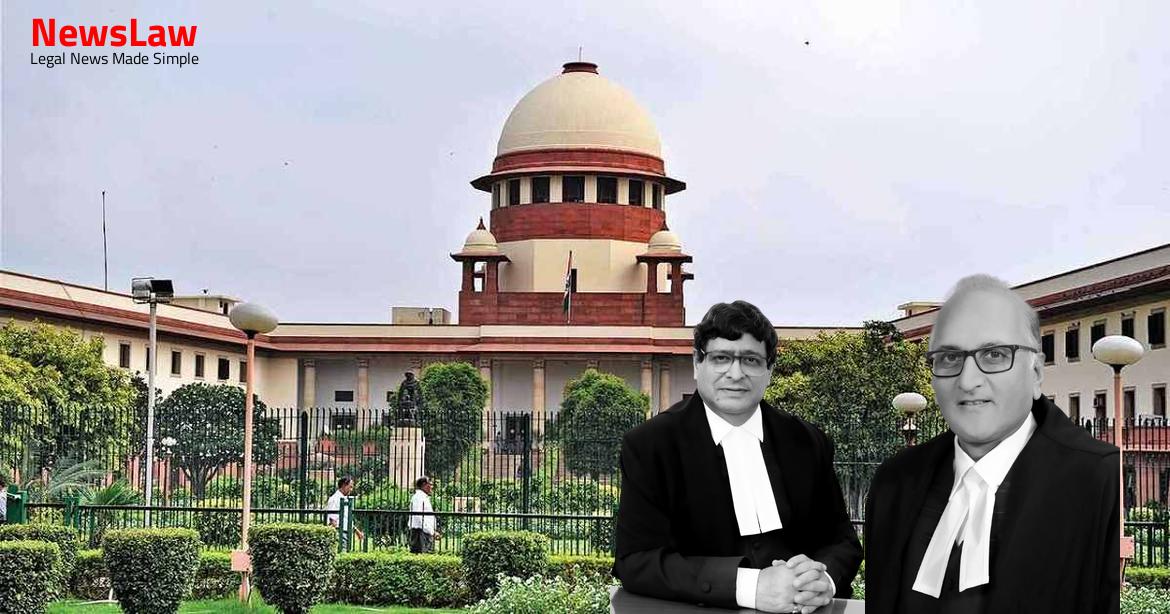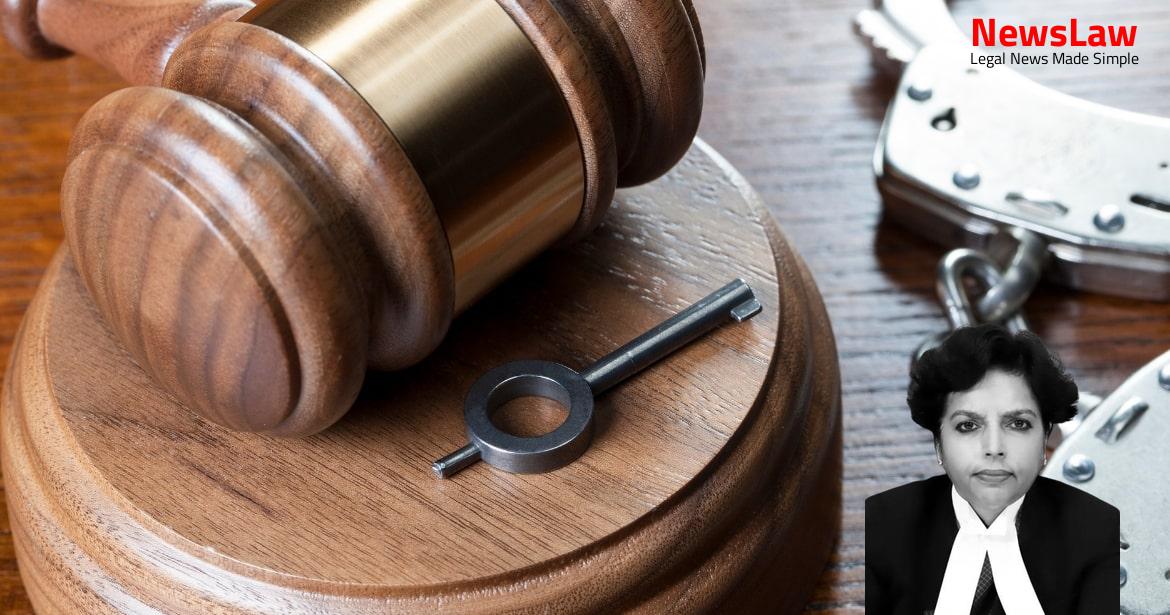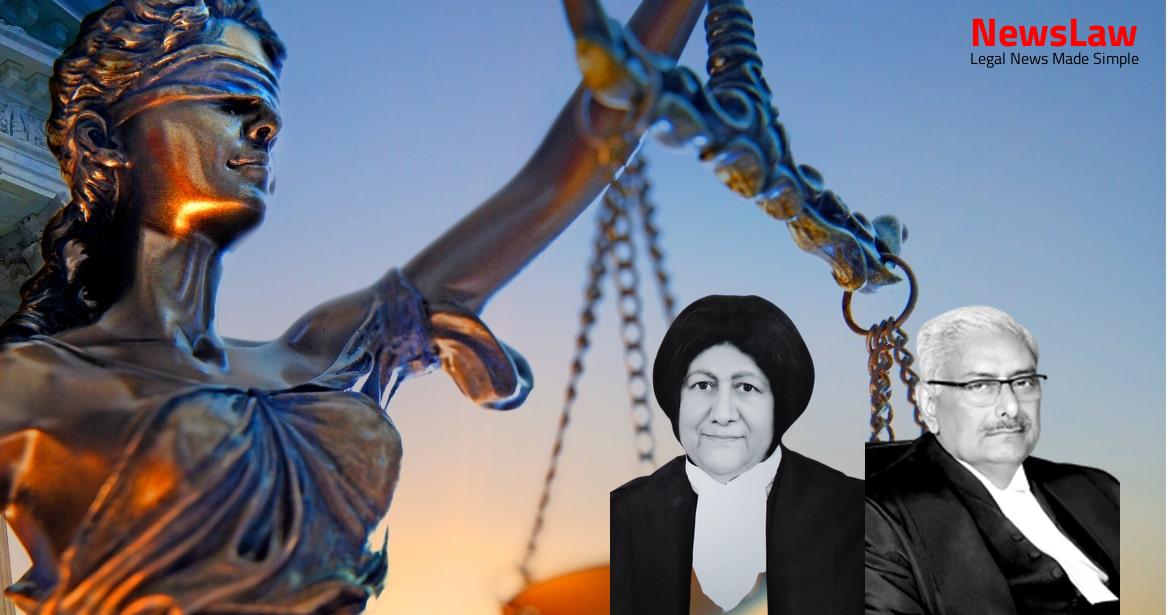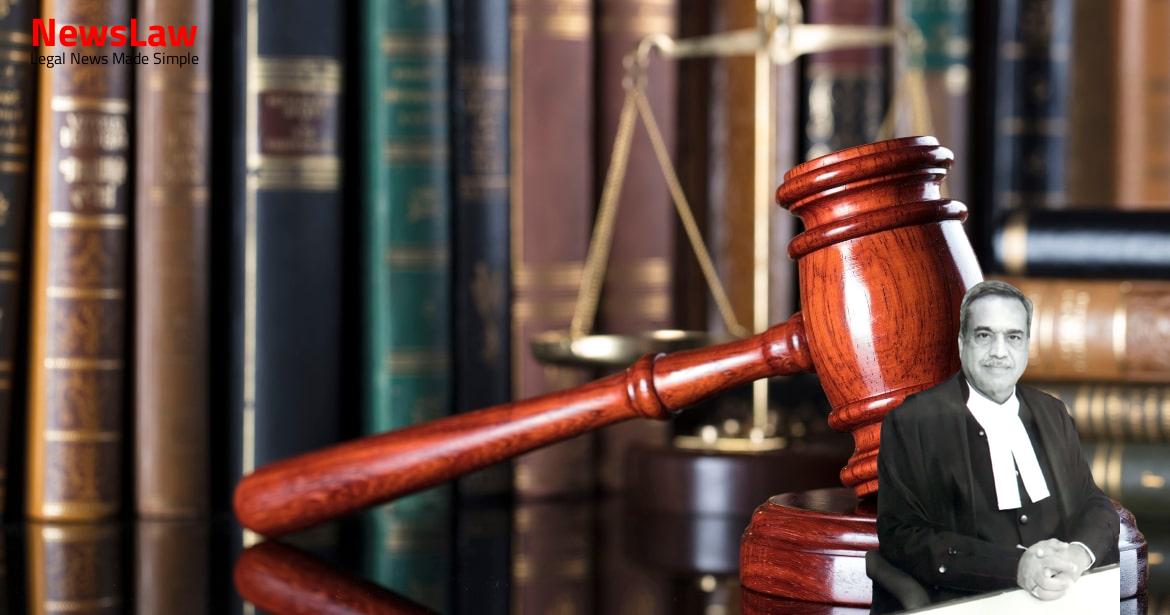This legal case summary delves into the court’s detailed analysis of circumstantial evidence standards in criminal cases. The focus is on the evaluation of evidence, burden of proof, and principles of presumption of innocence. The court emphasizes the crucial role of establishing a complete chain of evidence consistent only with the guilt of the accused. Stay tuned to unravel the complexities of legal analysis in evaluating circumstantial evidence.
Facts
- Appeals allowed
- Orders of Sessions Judge dated 19.03.2003 and High Court dated 31.08.2010 set aside
- Appellants to be released from jail, unless wanted in another crime
- Interlocutory application(s) disposed of
- The deceased, S. Rakakrishnan, 72 years old, was found murdered in his kitchen between 6:30 PM and 11:30 PM. The culprits stole around Rs. 3000 from his cupboard and cut his neck with a sharp weapon.
- A post-mortem conducted on 12.10.2000 revealed seven ante mortem injuries, including a fatal incised wound cutting jugular veins on both sides of the neck.
- The accused were convicted under Section 302 read with Section 34 IPC. The convicted sentence was upheld by the High Court, with four accused present for the trial.
Also Read: Court’s Jurisdiction in Re-appraising Arbitrator’s Findings
Issue
- The prosecution’s burden to prove the case beyond reasonable doubt.
- Evaluation of evidence presented against the appellants.
- Analysis of witness testimonies and their credibility.
- Assessment of any contradictions or inconsistencies in the prosecution’s case.
- Consideration of any alibis or defenses presented by the appellants.
- Determining if the prosecution has met the legal standard for proving guilt beyond reasonable doubt.
Also Read: Contrary Directions in Issuance of Letter of Intent
Analysis
- The Court scrutinizes each circumstantial possibility presented as evidence to point towards the guilt of the accused.
- The recovery of stolen items and the weapon, as evidence, is doubtful and lacks proper documentation.
- Confessions captured on video were played on a TV program, indicating interference in the administration of justice.
- The voluntary statements made by the accused were recorded on DVD and used as evidence.
- The trial court’s reliance on full statements rather than selective parts raises concerns.
- The High Court also affirmed the guilt based on circumstantial evidence and footage of confessions.
- The accused claimed statements were made under liquor influence, but no proof was provided.
- Non-recognition of recovered items by witnesses raises doubts on the evidence.
- The prosecution lacked direct evidence and relied heavily on confessions, which may violate constitutional rights.
- The trial court’s reliance on accused involvement in other crimes was not well-founded.
- The trial court’s reliance on voluntary statements as conclusive is debatable and may raise issues of evidence admissibility.
- Circumstantial evidence is inferential evidence and proof is derivable from circumstances.
- In a criminal case, the conflict between the presumption of innocence and any other presumption must prioritize the presumption of innocence.
- Proof in legal cases cannot be a rigid mathematical formula.
- The admissibility of tape-recorded conversations in specific legal contexts does not directly apply to criminal cases.
- Caution is advised when evaluating circumstantial evidence as it can be fragile and leave gaps for the accused to escape.
- Judicially evolved rules for the appreciation of circumstantial evidence include the need for clearly proved facts beyond reasonable doubt and a complete chain of evidence excluding all hypotheses except the one proposed to be proved.
- In murder cases relying on circumstantial evidence, the presumption of innocence should have a dominant role, and the burden of proving innocence lies with the accused.
- Presumptions arising under Section 106 of the Evidence Act are weak in murder trials compared to the presumption of innocence.
- Certain principles laid down in precedents like Hanumant Govind Nargundkar v. State of M.P. emphasize the necessity of a fully established chain of circumstances consistent only with the guilt of the accused.
- The case of Musheer Khan v. State of Madhya Pradesh stressed the importance of a complete chain of circumstances in circumstantial evidence cases.
- A reference is made to a Supreme Court decision allowing video tapes as corroborative evidence.
- The need for all links in the evidence chain to be proved beyond reasonable doubt and to exclude the guilt of any other person than the accused is highlighted.
- A confessional statement given by an accused before a Police officer is inadmissible as evidence under Section 25 of the Indian Evidence Act, 1872.
- No person accused of any offence shall be compelled to be a witness against himself.
- The well-established rule of criminal justice is ‘fouler the crime, higher the proof.’
- A moral conviction, no matter how strong or genuine, cannot serve as legal conviction in the eyes of the law.
- Suspicion, no matter how great, cannot substitute for legal proof in a court of law.
Also Read: Application for Stay in Civil Suit Rejected: Court’s Legal Analysis
Decision
- The life and liberty of a subject was at stake in the case.
- Given the capital sentence to the accused, a very careful and meticulous approach was necessary.
- The appeals are allowed, setting aside the orders of the Sessions Judge and the High Court.
- The appellants are to be released from jail unless wanted in another crime.
Case Title: MUNIKRISHNA @ KRISHNA Vs. STATE BY ULSOOR PS (2022 INSC 1322)
Case Number: Crl.A. No.-001597-001600 / 2022



